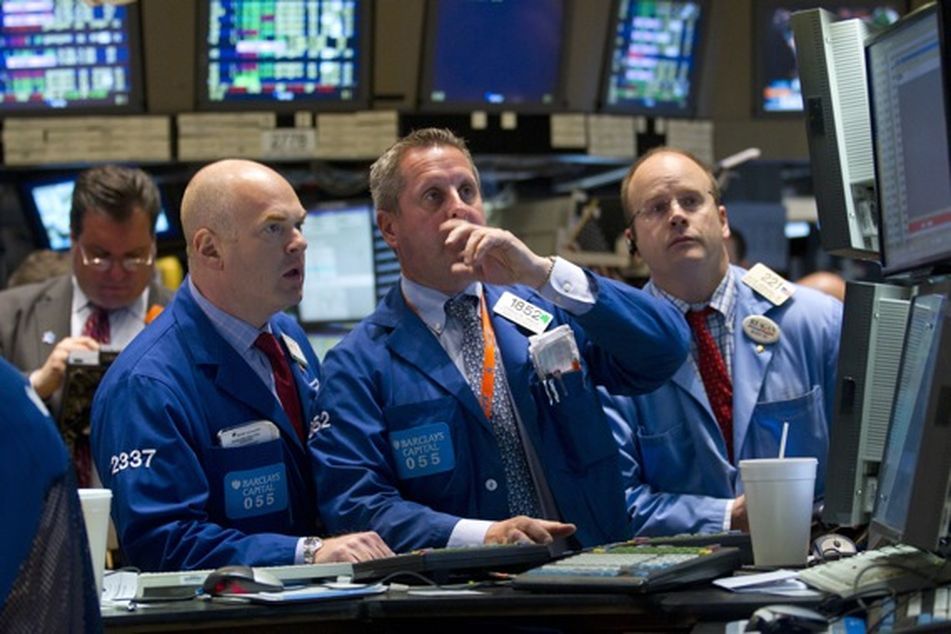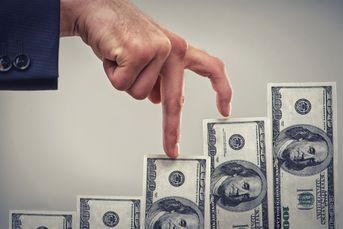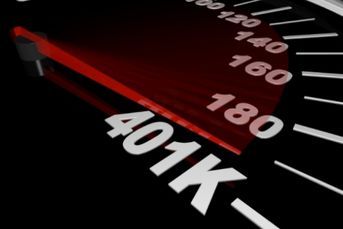Time to hop on stocks? Birinyi, others say yes
 Nervous Nelllies (Bloomberg News)
Nervous Nelllies (Bloomberg News)
Fears about the economy and Uncle Sam's AAA rating have rocked the equity markets, wiping out all the gains generated in the 2011 large-cap rally. But Laszlo Birinyi and other top stock pickers aren't panicked. In fact, they believe the correction is nearing its end.
The seven-day slide that wiped out the 2011 gain in the Standard & Poor’s 500 Index is no reason to sell stocks, said Laszlo Birinyi, one of the first investors to recommend buying when the bull market began in 2009.
Growing concern that the U.S. economy is faltering has erased $1.07 trillion from American equities in less than two weeks, according to data compiled by Bloomberg. The S&P 500 plunged 2.6 percent yesterday, posting its biggest one-day loss in a year and giving the index the longest losing streak since October 2008, the depths of the financial crisis caused by Lehman Brothers Holdings Inc.’s bankruptcy.
The drop surprised Birinyi, whose Westport, Connecticut- based research firm Birinyi Associates Inc. sees the bull market in U.S. equities lasting until 2013, based upon the length of prior advances. Investors who sell after the S&P 500’s 6.8 percent loss since July 22 will miss out, he said in a telephone interview yesterday. S&P 500 futures climbed 0.7 percent at 6:42 a.m. in New York today.
“It’s like all these times when you second-guess yourself, and you probably wake up a little earlier than you’re used to, and maybe you put an extra finger of scotch in the glass,” said Birinyi, 67. “It’s probably a good idea to have a gut check once in a while, because it makes you review and rethink your process. Our view is that this is still a market of some duration.”
Treasuries Gain
Investors sought the safety of Treasuries, gold and the Swiss currency yesterday even as President Barack Obama signed a plan to raise the federal debt limit, avoiding an American default. Attention has shifted to weakening economic data, including a 0.2 percent decrease in consumer spending, the slowest growth in personal incomes since November and an index of American manufacturing sinking to a two-year low.
The odds of another U.S. downturn are rising amid cutbacks in spending by consumers and the government, according to five of the nine members of the panel that dates recessions.
“This economy is really balanced on the edge,” Harvard University economics professor Martin Feldstein, a member of the Business Cycle Dating Committee of the National Bureau of Economic Research, said in an interview on Bloomberg Television’s “Surveillance Midday” with Tom Keene yesterday. “There’s now a 50 percent chance that we could slide into a new recession. Nothing has given us much growth.”
Industrials, Financials
Industrial and financial companies have led the S&P 500’s slump since April 29, when it climbed to an almost three-year high of 1,363.61. The measure, which rose 8.4 percent between Dec. 31 and its April peak, is now down 0.3 percent for 2011. It closed at 1,254.05 yesterday.
Equities have fallen worldwide. The Stoxx Europe 600 Index has lost 12 percent since Feb. 17. The benchmark equity index for Brazil, one of the biggest emerging economies, has retreated more than 20 percent, entering a bear market.
A plan to cut $2.4 trillion from the federal budget over 10 years was signed by Obama yesterday, helping the federal government avoid default while spurring concern the spending reductions may cause the economy to slow further. U.S. gross domestic product expanded at a 1.3 percent annual rate in the second quarter and 0.4 percent during the first three months of 2011, the Commerce Department said July 29. That compares with 3 percent in 2010.
“It’s prudent for the market to react the way it’s done, given the fact that you’ve had not only the debt situation, but also the fact that there are more questions about the economy,” Birinyi said.
Average Prices
In the S&P 500, 14 percent of stocks are trading above their 50-day average price, the fewest this year, according to data compiled by Harrison, New York-based Bespoke Investment Group LLC. While readings below 20 percent aren’t common and signal short-term gains in the market, the proportion has failed to surpass its highs from the end of 2010, a bearish sign, Bespoke said.
“This downward shift in equity performance has put a tremendous strain on bullish sentiment,” Chad Morganlander, a Florham Park, New Jersey-based money manager at Stifel Nicolaus & Co., which oversees $110 billion in client assets, said in a telephone interview yesterday. The “debt deal has put a damper on future government stimulus and expectations for future economic growth within the U.S. economy, which creates uncertainty for corporate profitability.”
Short-Term Profits
Traders looking for short-term profits may want to avoid equities for the next week or so, said Michael Shaoul, chairman of Marketfield Asset Management. Those with a time horizon of 18 months or more should buy stocks because corporate earnings aren’t weakening, he said.
“You’re much nearer the end of this correction than the beginning,” Shaoul said in a telephone interview yesterday. His $371 million Marketfield Fund returned 14 percent in 2010, beating 82 percent of peers, according to data compiled by Bloomberg. When the S&P 500 plunged between April and July of last year, he correctly predicted the market would rebound. “U.S. corporate activity is still intact,” he said.
Per-share earnings increased 18 percent and sales rose 14 percent among S&P 500 companies that have released quarterly results since July 11, according to data compiled by Bloomberg. About 77 percent of companies have topped the average analyst profit forecast, the data show. The S&P 500 trades for 13.8 times reported earnings, the cheapest level since July 2010.
The average bull market produces gains of 120 percent, Birinyi data show. The S&P 500 is up 85 percent in the current rally since the index slid to a 12-year low on March 9, 2009. Past rallies since 1962 show bull markets last four years and 23 days, almost twice the length of the current cycle.
“Obviously, we’re disappointed by the aggressiveness of the selling,” said Birinyi. “We still think that one can do well with intelligent and rigorous stock selection. That has not changed.”
–Bloomberg News–
Learn more about reprints and licensing for this article.






